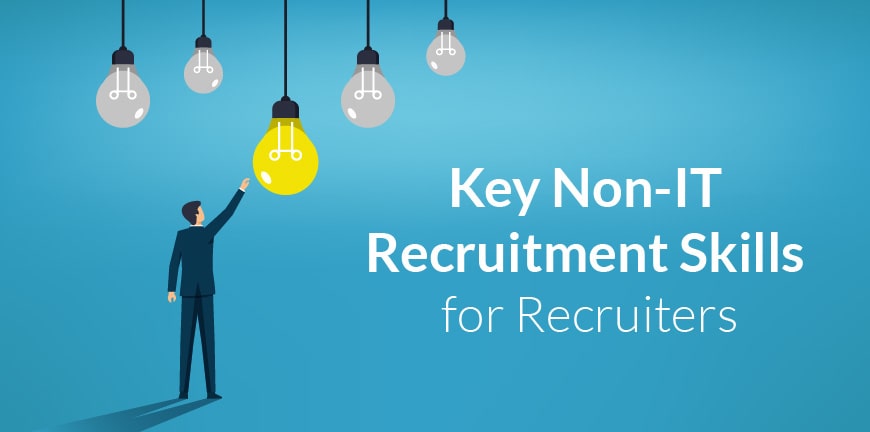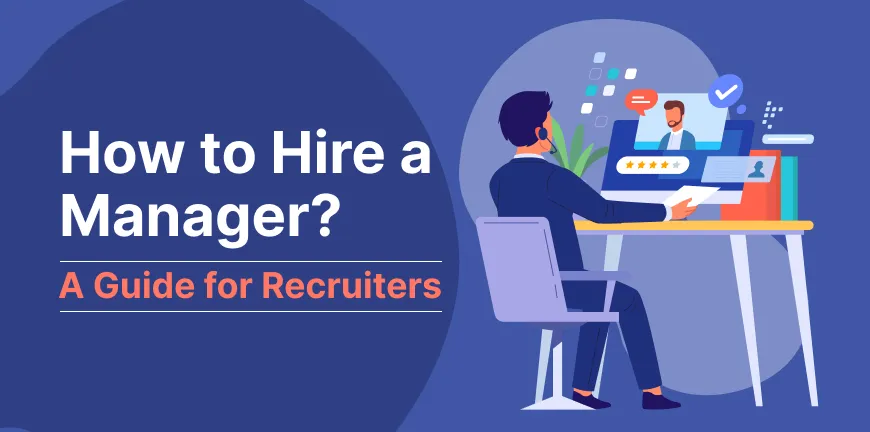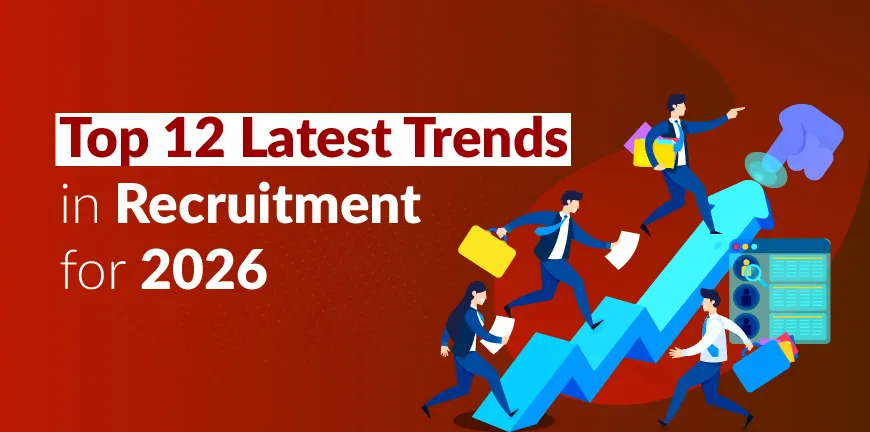
How Contract Staffing Works? A Step-by-Step Guide
24/11/2025
Top 7 Challenges GCC Leaders Face — and How to Solve Them
24/11/2025- What is Non-IT Recruitment?
- Understanding Non-IT Recruitment Skills
- What Skills Do Non-IT recruiters Need in 2026?
- What Tools Can Help Recruiters Hire Non-IT Professionals Faster?
- What are the Common Challenges in Non-IT Hiring?
- How to Improve Non-IT Recruitment Effectiveness?
- Why Is Candidate Experience Crucial in Non-IT Recruitment?
- Need Help in Recruiting Non-IT Staff?
- FAQs- Frequently Asked Questions
Hiring for a core non-IT role in the healthcare sector is very different from hiring for an IT role in a software company. Both demand different skill sets, different domain experiences, and possibly even different emotional and interpersonal skills, all while maintaining diversity and inclusion.
A non-IT recruiter, too, must be able to understand the needs of a different sector, be aware of common terminologies in use in the sector, and be able to identify skills in the candidate based on the resume and from direct discussions on what the job role demands.
What is Non-IT Recruitment?
Recruitment is done for a wide range of roles across various industries, for which candidates do not necessarily require technical skills. Some of the common non-IT fields are sales, marketing, finance, human resources, administration, customer service, and more. Candidates are evaluated based on their domain-specific knowledge and soft skills.
Understanding Non-IT Recruitment Skills
Non-IT recruiters face several challenges that are unique to non-IT. Some of these are:
Finding the right candidates in niche roles in industries where it is already difficult to find good hires, making screening rounds unique to each industry, the need for extensive onboarding and orientation, training in communication and social skills if the role is customer-facing, and implementing a performance management system unique to each industry and department therein. To be better at what they do, non-IT recruiters must have certain basic skills, some of which are outlined below.
What Skills Do Non-IT recruiters Need in 2026?
To be better at what they do, non-IT recruiters must have certain basic skills, some of which are outlined below.
- Very good communication and interpersonal skills
- Very good time management and organizational skills
- Attention to detail in sourcing and screening.
- Very high proficiency in the language of recruitment
- Capable of multitasking in a dynamic environment
- Ability to stay diplomatic and act with discretion.
- Proficiency with MS Word and Excel
What Tools Can Help Recruiters Hire Non-IT Professionals Faster?
A good set of skills for non-IT recruitment is probably half the battle won. But only with the help of software and tools will the process of non-IT recruitment be complete. They help save a lot of time and probably costs as well by reducing the time to hire. Below are some common tasks that recruiters handle and tools that help with managing them well.
1. Text tools to write better
Textio (an augmented writing tool that utilizes data-driven feedback to improve job descriptions). This is particularly useful for non-IT recruitment, where a recruiter may not have deep domain experience. This writing tool will help complete job descriptions and correct spelling errors if there are any.
2. Social media management and listening
It’s important to keep listening to conversations about your company on social media. This helps identify what job seekers might be thinking of your company and what you need to do to improve that image. These conversations can be monitored using social media management and listening tools like Agorapulse. These tools can also help you schedule job posts at your convenience on social media, especially on LinkedIn and Facebook.
3. Collaboration and consistent communication
Recruiters also need to collaborate, especially in bigger teams where there are several of them. This is to ensure that they are on the same page regarding any candidate at any stage in the lifecycle, beginning with attraction and ending with the exit interview and survey. Such consistency ensures that every communication they send out is also well-drafted. For a simple collaboration tool, look at Trello. For more features, look at Asana or Monday.com.
4. Screening and interviewing
Recruiters need tools and resources most during the core process of recruitment, that of hiring. While some tools take a predictive approach to hiring based on the persona of an ideal candidate put forward by the HR team, others do so by using AI.
The Predictive Index uses the former approach and assigns points, assessing candidates on their cognitive and behavioral skills. Plum, on the other hand, is an AI-enabled solution that prides itself in being far more accurate than a resume, also measuring innovation and work ethic among other things.
5. Video interviewing
Ever since the pandemic and the rise of remote work, video interviewing has gained a lot of popularity. It allows the non-IT recruiter to follow the candidate’s style of speaking a lot better, understand how much conviction they have, and how honest they are with the assignments and the background references they have submitted.
This is crucial to shortlisting and onboarding the right candidates. A video interviewing tool that also closely follows the recruitment lifecycle is Vidcruiter. If one does not wish to pay for a dedicated video interviewing solution, then one could consider using MS Teams to do the interview.
6. Background checks
Better to embrace the facts sooner than later. It hurts the candidate’s experience when the background checks at a later stage fail for whatever reason. So, it is better to conduct these background checks early in the recruitment process.
GoodHire has nearly 250 million records verified with several separate background checks, which include drug tests and overall health.
7. Onboarding tools
Onboarding in most companies is moving swiftly to a completely paperless solution. Today it is possible for non-IT recruiters to allow candidates to onboard by themselves, complete forms as per checklists on the mobile or laptop, and streamline other aspects of the process.
What are the Common Challenges in Non-IT Hiring?
Some of the common challenges in non-IT hiring are-
1. Finding Skilled talent in a tight job market
Its not just tech individuals that are hard to find and recruit, individuals with great non-IT skills are also hard to find in the extremely competitive job market out there.
2. HR’s lacking specific Hiring Skills
If the HR or recruitment team doesn’t have the skills and acumen to spot skilled and qualified individuals in the non-IT field out of the thousands of applicants applying for a job, chances are you may not get the best fit for your non-IT open positions.
3. Manage hiring costs
For a lot of companies, delays in hiring can lead to financial losses and slow down growth. Even worse, hiring the wrong person can result in even greater costs due to lost productivity, the need to rehire, and the onboarding process.
4. Diversity and Gender Bias
Recruiters, in some situations, mostly base their hiring decisions on biased opinions of the candidate. This, of course, is unconscious bias, but it fails to attract and hire the best candidates.
5. High Turnover
For some non-IT roles, there are higher turnover rates that organizations face due to which recruiters need to repeatedly go through the whole process quite often, adding to their burden.
How to Improve Non-IT Recruitment Effectiveness?
Some of these tips for effective non-IT recruitment may be familiar to experienced non-IT recruiters. Let us look at the tips now in more detail:

1. Market your brand to your candidates
When trying to increase the visibility of your brand and build a name, you can try the following, with the assistance of other teams, especially PR and marketing.
- Project your brand well organically on social media.
- Promote your brand on review sites.
- Maintain a good website with a great career section.
2. Write better job descriptions
Job descriptions can make or break a hiring process. It’s where you start, so use Textio to write them better. A well-crafted job description communicates the right matter, removes any doubt, makes further communication smoother, and sets the right expectation (if it is authentic, informative, and precise).
3. Use employee referrals
Tap into the professional networks of your own employees to hire new ones. Award tangible benefits to the person who made the referral and to the person who got the job to ensure people stay motivated in their referrals.
Respect the time that an employee puts into getting hold of references if they are working in the company’s favor. GoodHire can ensure that every employee referral goes through a stage of background checks can be accurately verified before they are even considered for screening.
4. Create a better candidate experience
Monday.com is great for this. Trello can also be used.
A prospective employee comes in with an opinion and leaves or stays with a belief. Every communication received from the recruiters, hiring manager, and other people involved in the recruitment can affect the way the company is perceived.
Do you also use an applicant tracking system or automated messaging to manage your recruitment? The automated responses from such software could also influence the perception a candidate has about your company. They will also spread the word among those they know, affecting how other job seekers see your company.
5. Look for internal recruits
This requires no tool, just a great network within your company that you can tap into to get the recruits you want. Hiring internally ensures that the cost of hiring remains low, you must pick from a smaller pool of well-trained talent, and the morale of the hired employees continues to increase.
When looking for internal recruits, discuss with the managers in the respective team, understand requirements, and fortify training processes to ensure they meet the learning and development needs of the hired employee.
6. Use a dedicated spreadsheet
Decide on whom to interview and assign different priorities to each candidate in the recruitment process, so that you know whom to call for an interview again. Make sure that this checklist or rubric is updated regularly.
If you do not want to use Excel to implement a checklist, then you can use a tool like Trello to keep track of this as the simpler choice or even Monday.com if you want more features like tracking the stage of the candidate lifecycle, he/she has reached.
Why Is Candidate Experience Crucial in Non-IT Recruitment?
Candidate experience is extremely important, especially in today’s environment, with extreme competition for talent. Some of the reasons why it’s crucial are-
- If your hiring process is positive, transparent, and shows that it values the applicant’s time and profile, chances are, one of the potential candidates will accept your offer, thanks to the positive hiring process.
- Open positions fill faster and reduce time-to-hire. This also greatly improves offer acceptance rates.
- When a candidate is going through the recruitment process, suppose they have a positive experience, it can translate to positive advocacy, whether or not the candidate gets the job. Good word of mouth improves employer branding.
- When your hiring process is bias-free and all applicants are treated equally and are given equal opportunities can help attract diverse non-IT talent.
- Putting out clear job descriptions, conducting proper interviews, and updating candidates as to how far along they are in the recruitment process, providing proper feedback to reduce cycles, and improving interview performance.
Need Help in Recruiting Non-IT Staff?
Recruiting for non-IT is a difficult task. To ensure that your recruiters are up for the game, you can make sure they have access to the tools and resources that have been mentioned in the previous section.
Following the tips that have been mentioned could also help. Though it will greatly improve the recruitment process, there is still no guarantee that you will get the right candidates.
Alp Consulting, a company with nearly 25+ years of experience in recruiting, staffing, payroll, and compliance, can help with recruiting for non-IT if you are looking to outsource your non–IT recruitment needs.
We can manage other functions of HR as well. So, when are you talking to us?
FAQs- Frequently Asked Questions
1. What is non-IT recruitment?
Recruitment is done for a wide range of roles across various industries, for which candidates do not necessarily require technical skills. Some of the common non-IT fields are sales, marketing, finance, human resources, administration, customer service, and more. Candidates are evaluated based on their domain-specific knowledge and soft skills.
2. What are the key skills required for non-IT recruiters?
Very good communication and interpersonal skills, very good time management and organizational skills, Attention to detail in sourcing and screening, very high proficiency in the language of recruitment, Capable of multitasking in a dynamic environment, Ability to stay diplomatic and act with discretion, Proficiency with MS Word and Excel.
3. What tools can recruiters use for non-IT hiring?
Recruiters can use a variety of tools for non-IT hiring, including Applicant Tracking Systems (ATS) to manage candidates, job boards and social media to source candidates, assessment tools to evaluate skills, video interviewing software for remote interviews, and recruitment marketing platforms to reach a wider audience.
4. What are the biggest challenges in non-IT recruitment?
The biggest challenges in non-IT recruitment include managing a high volume of applications, a large candidate pool, and the difficulty in evaluating soft skills and cultural fit.
5. How does Alp Consulting help companies with non-IT hiring?
Alp Consulting helps companies with non-IT hiring by providing end-to-end recruitment services, from sourcing candidates to final onboarding, with a deep understanding of various industries like finance, manufacturing, and healthcare.
Contact Us For Business Enquiry

Amit Saproo
Amit Saproo is the Head of Operations at ALP Consulting with nearly 17 years of experience in Executive Search, RPO, Leadership, and IT & Engineering recruitment. He leads nationwide recruitment programs across Technology, BFSI, and R&D domains, driving strategic hiring solutions for diverse client needs. Amit excels in building and managing high-performance teams that deliver scalable, end-to-end recruitment and consulting services.




